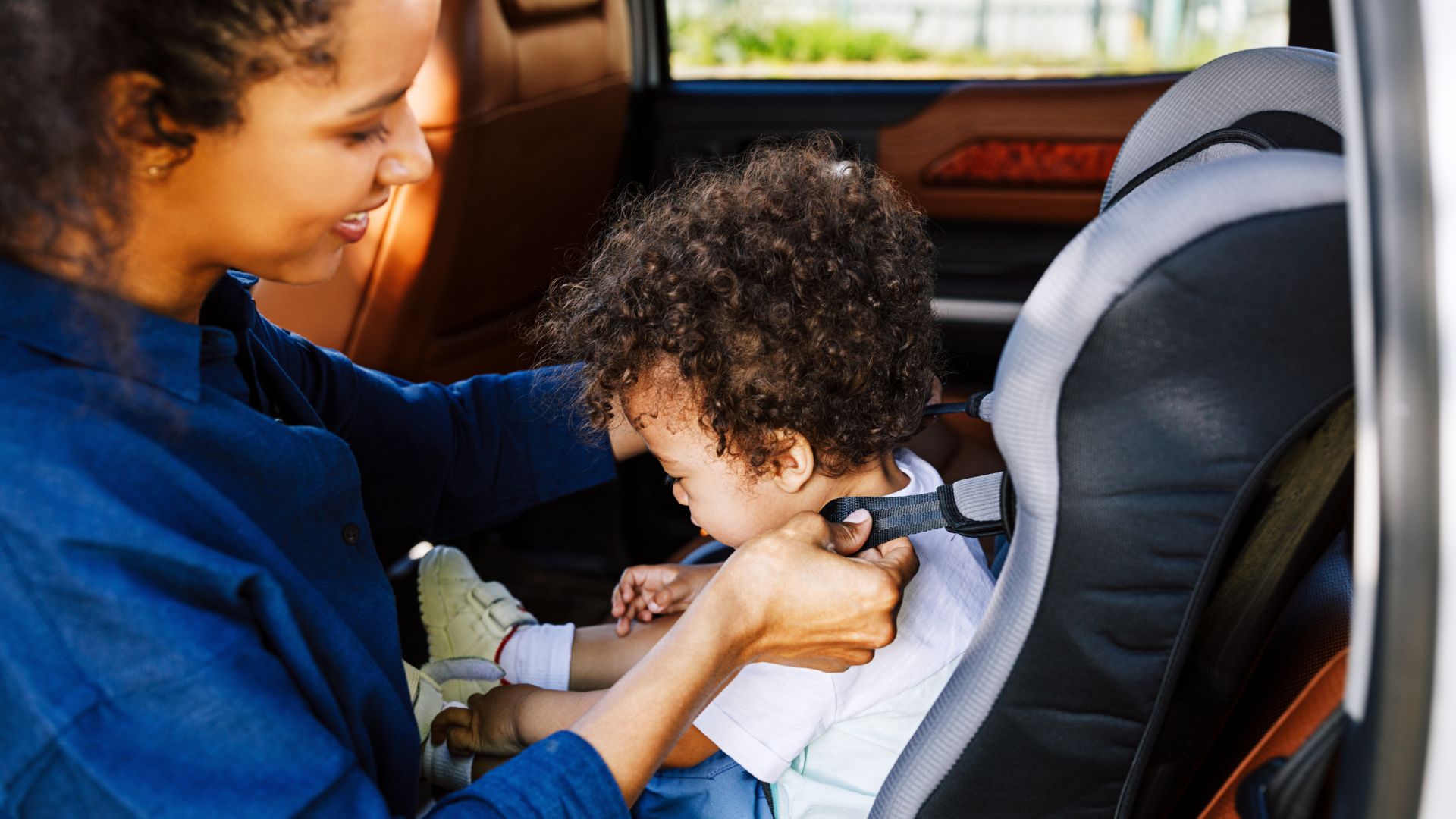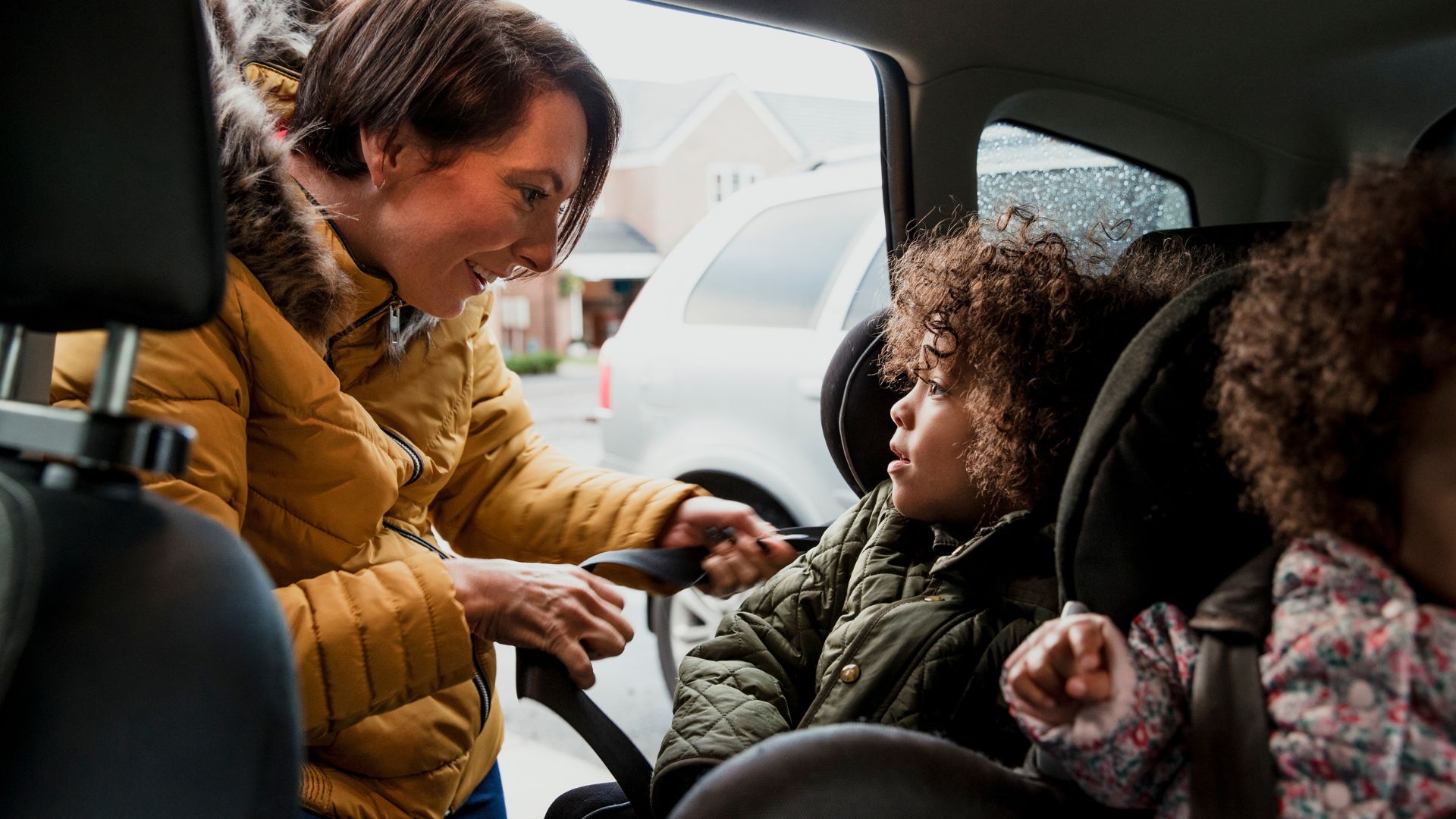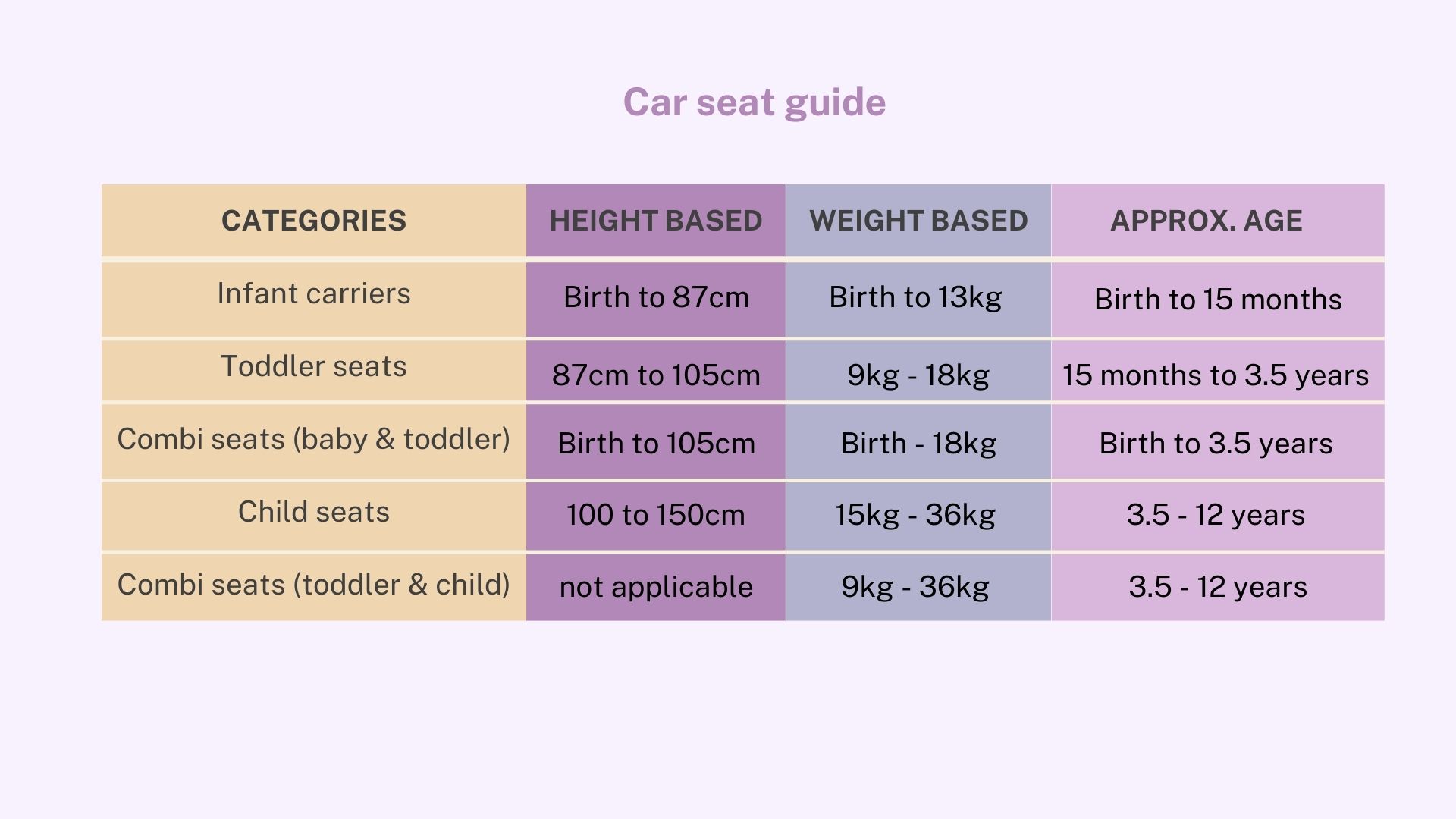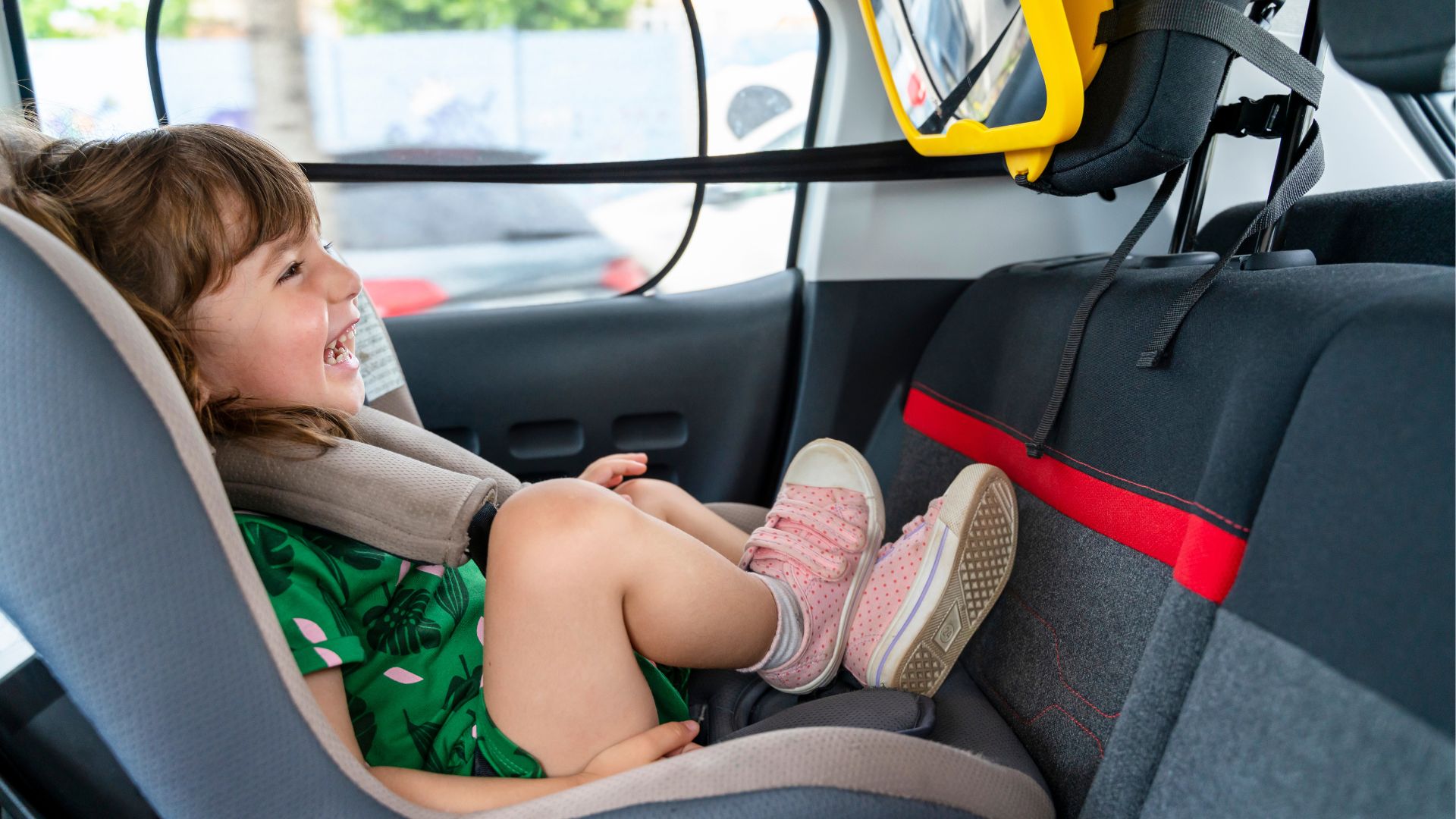Child car seat rules: what are they, and what age can your child use a booster seat?
Child car seat rules are there to protect everyone in the car

Child car seat rules are in place to help protect entire families when out and about in their car, they are also a legal requirement in the UK.
Rules on car seat safety can be confusing, incredibly so if a little bit sleep-deprived. Breaking the parenting cycle - ‘this is what I did when I was a kid and I’m okay’ - and refreshing baby car seat knowledge can easily be overlooked, did you know that seat belts weren’t a legal requirement until 1987, even more, shocking is that the use of children’s car seats wasn't a legal requirement until 2006.
However, since then, all infants from birth until a certain age or height must be in a specially designed car seat - this is a legal requirement. And, failure to do so will likely result in a £500 fine. Buying the best car seat - as well as fitting it and replacing it can be a confusing experience for any parent.
Alarming research from last year, commissioned by law firm Slater and Gordon, suggests that nearly three-quarters of parents are still unclear of child car seat laws, which underwent changes in 2017. Information on car seat laws can be a little confusing, so we've collated a list of everything you need to know to keep your child safe while driving.
Child car seat rules
According to Gov.uk, children must use a child car seat until they’re 12 years old or 4ft 5in/135 cm tall - whichever comes first. Children older than 12 or taller than 135cm must wear a seat belt.
Height-based seats, known as i-Seats, must be rear-facing (turned with the child facing the back window) until the child is over 15 months old. They can change to a forward-facing car seat over 15 months, if the parent wants to.
Main points of the law are;
GoodtoKnow Newsletter
Parenting advice, hot topics, best buys and family finance tips delivered straight to your inbox.
- Height based seats are required to be used Rear Facing for a minimum of 15 months.
- A suitable child car seat must be used until the child reaches a height of 135 cms or 12 years old, whichever is reached first.
- There are some special rules for children under 3 years:
a) A child under 3 years may never travel in the front seat of a car without the correct restraint
b) They are allowed to travel in a Taxi, minicab, minibus, coach or van without a suitable seat
c) On an unexpected journey – an emergency
d) There is no room for another car seat

However many safety experts recommend using a child car seat for all children under 150cm/4ft 11in. And, if you’re travelling to Ireland or other European countries, like France or Germany, then it’s worth remembering that this is the legal requirement there.
Julie Dagnall, Director of Child Seat Safety says: “The law states that a child should travel rearward facing up to 15 months and 76cm, whilst nursery industry guidance recommends that parents continue with rearward travel until their children are at least four years old and if possible six."
“Parents often move to forward facing travel due to a range of factors, including ease of travel, confidence that their little one is more robust and no longer a small baby and even travel sickness. At Child Seat Safety we have a responsibility to ensure parents understand that they should be transporting their children in the safest possible way."
When can my child use a backless booster seat?
According to the RAC, children weighing more than 22kg and taller than 125cm can use a backless booster seat. Children of 12 years old or taller than 135cm do not need to use a child seat, they just need to use the seatbelt.
Child car seat rules for different weight categories
- 0kg to 13kg - use a lateral or rear-facing baby carrier, or a rear-facing infant carrier with a harness.
- 9 to 18kg - use a rear- or forward-facing baby seat using a harness or safety shield.
- 15 to 36kg - use a rear- or forward-facing child car seat using a seat belt, harness or safety shield

Only EU-approved car seats can be used in the UK. Look out for a label with a capital 'E' in a circle, followed by 'R129' (height-based seats) or 'ECE R44' (weight-based seats).
From February 9 2017, booster seat manufacturers are only permitted to make backless booster seats for children taller than 125cm or weighing more than 22kg.
This law doesn’t affect existing seats or cushions, meaning that parents who have a booster seat now will still technically be able to use them without breaking the rules, but you should note that many experts do not approve of backless seats or booster cushions under any circumstances.
Consumer experts Which? explains: 'The new additions to the child car seats regulations will only apply to any new products appearing on the market. So parents looking to buy a booster seat next year should start to see that they're not approved for use with children under 125cm and 22kg.'
Child car seat rules: the 8 top safety tips
Our handy car seat safety guide will help you to keep your child safe on the road.
1. Check your car & seat compatibility
Once you've worked out which seat is the right fit, you'll need to check its compatibility with the cars it'll be used in. You will see that you have a wide range choice of car seats; some are 'group-specific' (i.e. designed exactly around the physiology of children of specific weight and size and some are called 'combination seats', which are designed to cover a much wider weight and age range).
While the group-specific car seats offer tailored protection along with the ultimate comfort and fit, the combination seats offer maximum flexibility and longevity. Only you can decide what is best for your family and lifestyle, as long as the car seat fits your child and your car.
2. Know when to change seats
It's also important to know when to move your child to the next seat. Here are some key points to look out for:
Group 0+ infant carrier - You might want to move from this when your child exceeds the weight limit, or if their head is higher than the top of the infant carrier.
Group 0+/1, or 1 seat - Move from this when the upper edge of the shell is roughly at eye level of the child or your child exceeds the weight limit.
Group 2/3 seat - Do not move too early, thee these seats are wider to accommodate larger children. A younger child's shoulders are too narrow to hold the adult seat belt securely and can therefore easily slip out from under the belt, especially when they fall asleep during the journey.
3. Keep babies and younger children rear-facing for as long as possible
While we know it doesn't look great, it really isn't damaging if your child has long legs, they will find a way to be comfortable. But, for safety reasons, you should keep your child in each stage car seat until they reach the weight limit or their head reaches the top of the seat. This is especially important for babies as rearward facing seats offer the safest way of travelling. In July 2013 a new regulation was put into place (ECE R129); this regulation includes mandatory sitting in rear-facing seats until a minimum of 15 months, proven to be the safest way to travel for young children in the unexpected event of a frontal collision.

Rear-facing car seats were previously only available for very young children, but with wider availability in all sizes now and increased safety benefits a rear-facing seat is thought to be the best option, even for children up to five years of age. In many European countries rear-facing car seats have been mandatory for children up to four years old and it's reported that death and injury rates have plummeted as a result.
Always ask your car dealer about the safety features available, especially when comparing vehicles. The Suzuki Vitara is a great family choice, as it offers several driver assistance features, including systems to avoid collisions, lane departure warnings and blind spot monitoring.
In a collision children in a front-facing car seat would be pushed forward, out of their seat, whereas children facing backwards would be pulled into their seat, where they would be more protected. This is important because babies and young children have under developed neck muscles and need increased support. When considered buying a car seat, look at rear facing options for older children too, not just babies - to give the best possible protection against injury.
Make sure you remember the rules around airbags, as it's illegal for a child to travel in the front seat in a rear-facing car seat if the car has airbags.
4. Conform to safety standards
When you're buying an infant carrier or car seat, you will see either the ECE R44/04 approval or the ECE R129 approval label, both of which are current approval standards for children's car seats in Europe.
5. Get an expert fit
Although car seat installations are very similar, they are not exactly the same. That's why there is a separate installation manual for each car seat in the market, because there are small nuances in installation and usage. When you purchase a new car seat, it's highly recommended that you take your car to the store and have the seat demonstrated by an in-store specialist who will also fit it into your car for you.
Make sure the seat is the right one for the weight, height and age of your child, and do check your child's comfort too.
6. Piece of paper attached to a child’s car seat
The idea of attaching a piece of paper to the car seat was originally posted to Facebook by the Rose City Area Fire Department, located in Michigan, USA.
The notice gave the child’s and parents’ names and dates of birth, along with important medical notes, like whether the child could speak. This can help the emergency services if you are ever in a car accident.
7. Do not jam car seat under the headrest
It's one of the most common car seat mistakes out there, but when you’re fitting a car seat in a vehicle, don’t wedge a head restraint over the top of a seat. Doing this could put a youngster in serious danger if the vehicle were to get into a collision.
Child Seat Safety then shared their very straightforward solution, "Remove the head restraints and put in the boot or turn them round."
8. Lose the winter coats for car seat safety
The straps of the car seat must fit snugly against your child’s chest to keep them secure in the event of a crash, or if you have to brake harshly. But wrapping your kids up in thick layers during the winter means that you are creating a much bigger gap between the straps and your child’s chest so take them off to ensure your child's car seat is still safe in the winter.
These clips, from Good Egg Child Safety’s YouTube video, demonstrates the horrifying gap your child’s coat could be creating between them and their all-important car seat straps.
You might also like:
Best baby car seats
Cybex Cloud Z iSize car seat review
How to check if your baby bed is safe
Niamh McCollum is a freelance lifestyle writer who has written for Future titles GoodTo and Marie Claire UK, plus the Irish Independent. The Dublin-based journalist specialises in stories
affecting families - from health updates, to the freshest parenting debates and celebrity announcements.